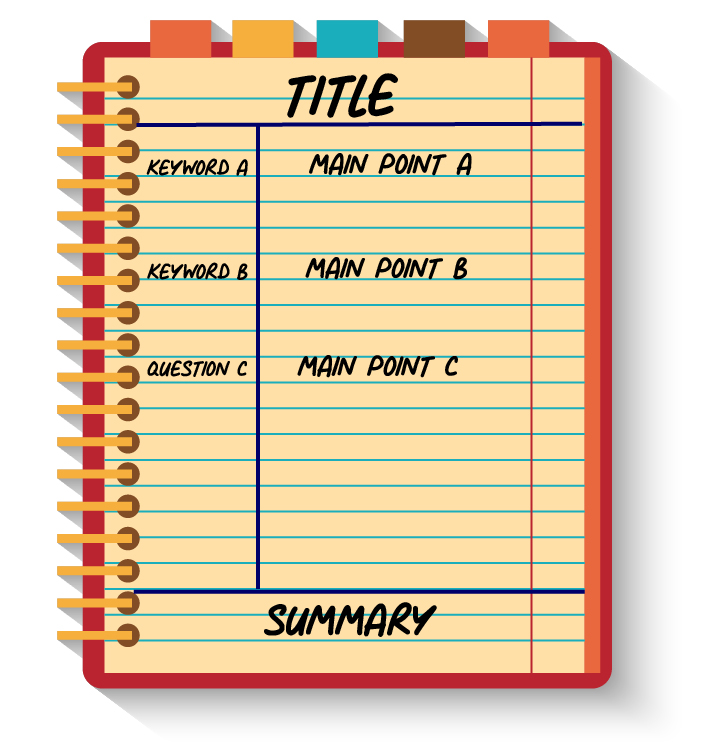In the fast-paced realm of education, the ability to take effective notes is a skill that can significantly impact your learning experience.
In a world where information is abundant and diverse, note-taking techniques serve as invaluable tools to navigate through lectures, readings, and discussions.
This article delves into the world of note taking techniques, emphasizing their importance, the array of benefits they offer, and the top strategies that can elevate your academic prowess.
Note Taking Techniques: What Are They?
At its core, note-taking is not just about jotting down words; it’s a systematic approach to capturing and organizing information.
Note-taking techniques encompass various methods and frameworks that help you structure your notes in a meaningful way.
These techniques transcend passive transcription, enabling you to synthesize ideas, recognize patterns, and make connections within the material.
Benefits of Mastering Note Taking Techniques
- Enhance Understanding: Effective note-taking goes beyond mere recording—it encourages active listening and engagement. Organized notes facilitate a clearer grasp of intricate concepts, enhancing your overall comprehension of the subject matter.
- Retain Information: Notes that are well-structured and logically organized become memory aids. They provide visual cues and contextual frameworks that facilitate information recall, making revision a smoother process.
- Facilitate Revision: Notes that are properly organized and annotated simplify the review process. When it’s time to study for exams or assignments, your well-crafted notes become invaluable study companions.
- Promote Active Engagement: By employing note-taking techniques, you’re compelled to actively participate in lectures and discussions. You’re not merely a passive listener; you’re actively summarizing, paraphrasing, and analyzing the content.
- Synthesize Information: Effective note-taking encourages you to synthesize information on the spot. You’re compelled to extract key points, identify main ideas, and connect concepts, helping you develop a comprehensive understanding of the material.
- Optimize Study Sessions: When it’s time to study, organized notes serve as efficient study aids. You don’t waste time sifting through scattered information; instead, you can focus on revisiting key points and reinforcing your learning.
Top Note-Taking Techniques
- Cornell Method: Divide, Digest, and Summarize
The Cornell Method is a structured approach that maximizes engagement and retention. Start by dividing your paper into three distinct sections: cues, notes, and summary. The cues section, situated on the left side, contains concise keywords or questions that act as prompts for the main content. The notes section, located on the right, is where you record the main points, details, and explanations. During lectures or readings, focus on capturing the most important information in this section. The summary section at the bottom offers an opportunity to synthesize the key concepts and main takeaways from the content. This method encourages active listening, critical thinking, and efficient review. - Mind Mapping: Visualizing Ideas
Mind maps are powerful visual tools that leverage the brain’s natural inclination for patterns and associations. Start with a central idea or topic in the center of your page and branch out with related subtopics. Each subtopic can further branch into sub-subtopics. The visual structure of a mind map encourages creativity and aids memory retention. It’s particularly effective for brainstorming, organizing complex concepts, and revealing relationships between ideas. - Outline Method: Hierarchical Clarity
The Outline Method organizes information hierarchically using bullet points and headings. Start with the main topic and use indentation to denote subtopics and details. This method simplifies complex subjects, making it easier to identify the hierarchy of ideas. It’s especially useful for subjects with a clear structure or when you want to present information in a logical sequence. - Charting Method: Structured Comparison
The Charting Method is ideal for summarizing data, comparing ideas, or categorizing information. Create tables, grids, or charts to categorize different aspects of the content. This method is particularly handy when you need to compare and contrast ideas, show correlations, or present statistical data succinctly. - Sentence Method: Comprehensive Understanding
Writing key concepts in full sentences encourages a thorough understanding of the material. While it may result in more extensive notes, this method ensures that you capture complete thoughts and explanations. This approach is beneficial for subjects that require in-depth comprehension and for building a comprehensive study resource. - Mapping Method: Spatial Visualization
The Mapping Method involves creating spatial representations of ideas, concepts, or processes. This approach is especially useful when dealing with interconnected topics. By visually depicting relationships between ideas, you gain a clearer understanding of how concepts interrelate. - Abbreviations and Symbols: Efficient Note-Taking
Developing a personalized set of abbreviations and symbols expedites note-taking without sacrificing content clarity. This technique is particularly useful when you’re aiming to capture information quickly, such as during fast-paced lectures or when you need to transcribe large amounts of content. - Digital Note-Taking: Organized Flexibility
Digital note-taking platforms like Evernote, OneNote, or Notion offer flexibility in organizing and accessing your notes. You can easily insert multimedia elements, links, and images to enhance your notes. The synchronization across devices ensures that your notes are readily available wherever you go. - Interactive Note-Taking: Engaging Enrichment
Interactive note-taking involves adding interactive elements like questions, comments, and personal reflections to your notes. This approach transforms your notes into an active learning resource. Engaging with your notes in this manner encourages critical thinking, self-assessment, and deeper engagement with the material.
Conclusion
Mastering these note-taking techniques empowers you to capture information effectively, enhance understanding, and optimize your study sessions.
Experiment with different methods to find the ones that resonate with your learning style and suit the subject matter.
Remember, the art of note-taking extends beyond mere transcription—it’s about transforming information into knowledge, fostering comprehension, and ultimately propelling you towards academic excellence.






